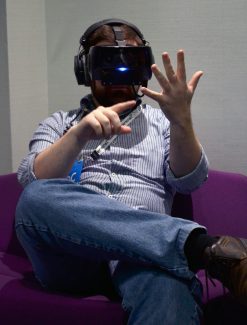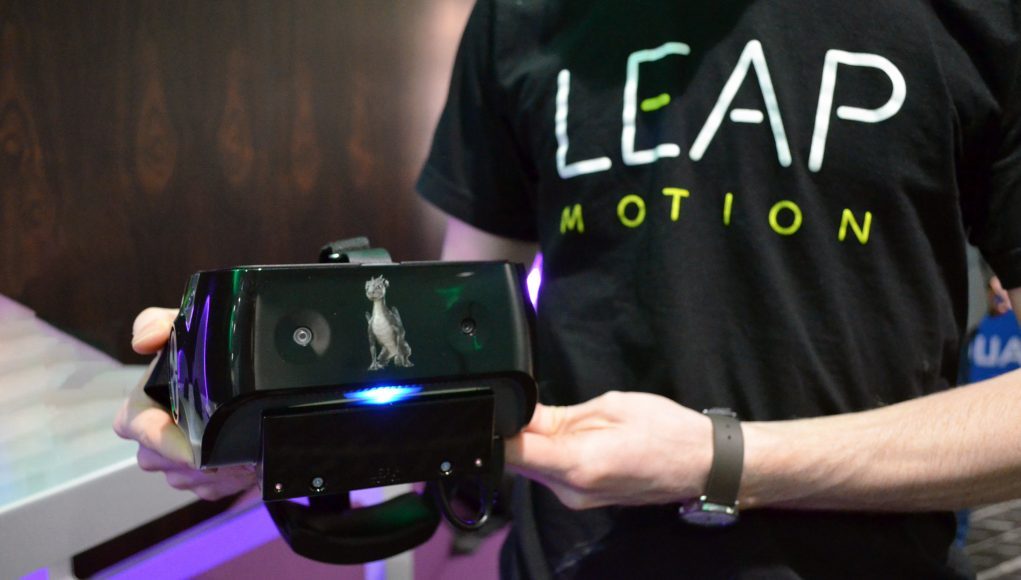Leap Motion, a veteran player in the virtual reality sector (having been founded two years ahead of Oculus), has announced the closure of a Series C investment round totaling $50 million.
Led by JP Morgan Asset management, Leap Motion’s Series C investment brings the company’s total public capital raise to just over $94 million, according to Crunchbase.
Founded in 2010, Leap Motion would release its initial product (today called the ‘Leap Motion Controller‘) in 2012, a desktop-focused peripheral which offered touchless hand-tracking. Though an interesting and functional device, the Leap Motion Controller had trouble finding a niche—seemingly a solution in search of a problem as far as desktop input was concerned. As virtual reality began to heat up, it became clear that there were major opportunities for novel input in the sector, and over time Leap Motion pivoted its focus from desktop to VR, offering a bespoke mount to allow developers to attach the device to VR headsets like the Rift DK2 development kit.
And while this application of the Leap Motion Controller felt more natural and produced plenty of cool demos, it became clear that high-end VR systems like the Rift and Vive would need equally high performance controllers—notably ones that would continue tracking even when the user’s hands weren’t held out in front of their face—and for that, those systems turned to VR controllers based on the same outside-in tracking technology as the the respective headsets.
However, one place in VR still seems like a potential sweet spot for Leap Motion’s hand-tracking tech: mobile. The ‘controllerless’ nature of the system makes it a natural fit for mobile VR headsets which aim to be portable and easy to use, and could substantially benefit from natural input without the need to tote extra devices. Mobile VR content—which is slower, and more focused on consumption—is also more suited to the limitations of Leap Motion compared to a dedicated VR controller.

You won’t be surprised to learn then that mobile is exactly where Leap Motion has placed its bets in the last few years. In 2016 the company made a substantial upgrade to its tracking tech with the launch of the VR focused ‘Orion’ update, and later debuted a new hand-tracking module specially designed for mobile VR headsets, with a much improved 180 degree field of view sensor to help maintain hand-tracking over a wider area. The company also teamed up with Qualcomm to offer its hand-tracking tech to headsets based on Qualcomm’s VRDK reference headset.
Despite that progress over the last few years, it wasn’t clear if Leap Motion was gaining much traction, even with class-leading hand-tracking (or how much longer they’d be able to survive); we’ve yet to see any major headsets hit the shelf with the company’s hand-tracking on board.
Still, the company seems poised for big things, with mobile feeling like a truly natural fit (along with the potential for AR headsets in the future), and investors must have agreed, with Leap Motion closing a large $50 million Series C investment. As part of the round, Lawrence Unrein, Global Head of JP Morgan Asset Management’s Private Equity Group, joins Leap Motion’s board of directors.
With the new cash, Leap Motion says its primary goal will be a global expansion into Asia, with a new office opening in Shanghai, China. Furthermore, the company intends to “advance innovation and adoption of its groundbreaking hand and finger tracking technology; and broaden its reach into new commercial and enterprise applications including education, healthcare, and industrial training simulation.”







